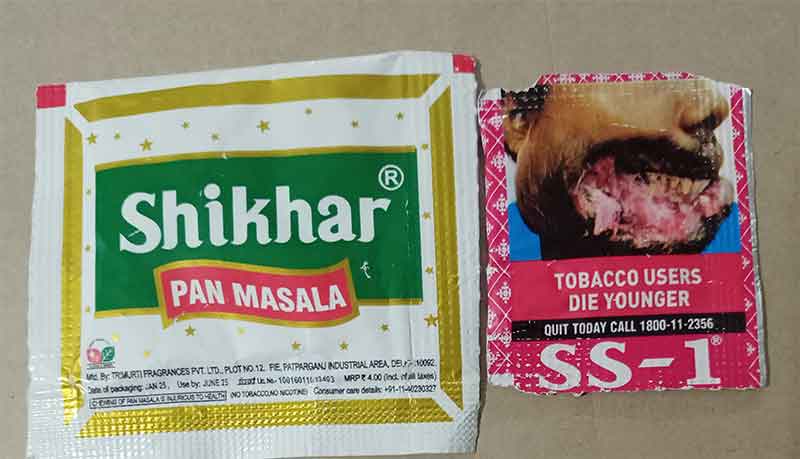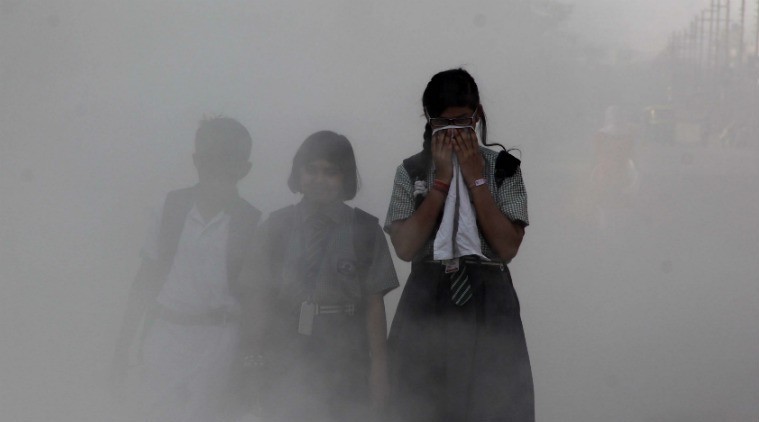
Introduction: A Looming Health Catastrophe
In Balabhadrapuram, East Godavari district, Andhra Pradesh, cancer cases—potentially linked to unchecked industrial pollution—are rising at an alarming rate. Two Chlor-Alkali Plant expansion projects, undertaken by Grasim Industries Ltd (Balabhadrapuram, AP) and TGV SRAAC Ltd (Gondiparla, near Kurnool, AP), for production of Polytetrafluoroethylene (PTFE), and Carbon Tetrachloride (CTC) are proceeding with questionable environmental clearances, raising concerns about public health and regulatory failures.
Despite global bans on Perfluorooctanoic acid (PFOA), a toxic chemical historically used in PTFE production, and India’s claim of phasing out Carbon Tetrachloride (CTC), these substances continue to pose serious risks to people. The loopholes and weak enforcement of the Stockholm Convention and Montreal Protocol are being blatantly exposed.
For context, the Stockholm Convention is a global treaty obligating signatory governments to eliminate or reduce the release of persistent organic pollutants (POPs) like PFOA into the environment. The Montreal Protocol, aimed at protecting the ozone layer, mandates signatories, including India, to phase out and eventually eliminate substances like CTC.
Despite known hazards, the Ministry of Environment, Forest and Climate Change (MoEFCC) granted Environment Clearance (EC) to Grasim for Perfluorooctanoic acid (PFOA) based PTFE production and EC as well as Terms of Reference (ToR) to TGV SRAAC even without explicit disclosure of chemicals used in PTFE production, thus failing to account for crucial details.
Meanwhile, the National Green Tribunal (NGT) has taken suo motu cognizance of a The Hindu news report (dated April 7, 2024) on the presence of “forever chemicals”—Per- and polyfluoroalkyl substances (PFAS)—in Chennai’s Buckingham Canal, Adyar River, and Chembarambakkam Lake, based on an IIT Madras study. Given this ongoing scrutiny, regulators must reconsider the EC granted to Grasim rather than waiting for judicial intervention. Why was the project approved despite undisclosed environmental safeguards and known risks?
EC for Grasim’s PFOA Use: Complicit Regulators and Their Failure in Public Hearing
Grasim has openly acknowledged using PFOA, a persistent organic pollutant linked to cancer, immune dysfunction, and reproductive harm, in its PTFE production. Yet, despite well-documented toxicity, MoEFCC granted EC to Grasim, pointing to regulatory complicity and a failure to prioritise and protect public health.
During Grasim’s public hearing, concerns about PFOA and CTC were raised but ignored, yet the project was still approved—exemplifying ‘regulatory capture,’ a phenomenon where governments prioritise corporate interests over public welfare. Balabhadrapuram now serves as a stark warning of its consequences. This glaring disregard for safety demands immediate corrective action.
TGV SRAAC’s Carbon Tetrachloride (CTC) Production Paradox
The Montreal Protocol Phaseout Schedule specifies phase out of controlled substances, including carbon tetrachloride (CTC) for all non-exempt uses. Interestingly, Decision VII/30 of the Protocol allows exemptions for feedstock applications, stating that controlled substances used entirely as feedstock in chemical manufacturing should not be counted as production or consumption in exporting or importing countries. Paradoxically, while MoEFCC and TGV SRAAC may demonstrate compliance with global treaties and protocols, the real concern that local communities will have to bear the burden of toxic exposure remains unaddressed. Regulatory exemptions do not eliminate environmental risks, and CTC’s toxicity remains a concern regardless of its classification as ‘exempted’.
While the MoEFCC’s press release dated 16th September 2022 declared that India has phased out Chlorofluorocarbons (CFCs) and Carbon Tetrachloride (CTC), the TGV SRAAC project aims to enhance its CTC production. If CTC as feedstock is exempted from phase out, who are its end customers, and why should they be allowed to use a chemical that India claims to have phased out? How did other countries like China fare with such exemptions ?
It’s a matter of serious concern that the public hearing for TGV SRAAC is scheduled for May 14, 2025, without even TGV SRAAC’s explicit disclosure of chemicals used in PTFE production. Given that the chemical plant is just 1 km from the Tungabhadra River, the risk of toxic contamination is too high to ignore, as it could severely impact downstream ecosystems and drinking water sources. This hearing must be deferred until full transparency is ensured.
China: Exemption Based Regulation Paradoxically Increased CTC Emissions
Despite phase-out of CTC production and consumption for dispersive applications in 2010, its production in China continues under permitted exemptions and for nondispersive feedstock applications. These remain unregulated under the assumption that nearly all CTC produced is subsequently used, recycled, or destroyed. However, China’s reports to the United Nations Environment Program (UNEP) reveal that CTC emissions in eastern China during 2021–2022 far exceeded consumption levels for dispersive uses, raising critical concerns about unaccounted sources.
Bottom-up emission estimates for CTC rely heavily on industry-reported data, assuming accurate disclosure of production volumes, feedstock usage, and containment measures. Top-down estimates, conversely, use atmospheric measurements and models to infer emissions from larger areas, such as entire regions or countries. Yet, discrepancies between bottom-up estimates and top-down estimates in China suggest the presence of unreported emissions, process inefficiencies, or deliberate underreporting, reinforcing the need for independent verification. Historical precedent shows industries have underreported methane emissions and exploited regulatory thresholds, demonstrating that similar patterns could apply to CTC.
While knowledge on this mysterious emissions gap continues to build, experts have increasingly recognised inadvertent emissions from chlor-alkali plants and non-feedstock emissions from chloromethanes (CMs) and perchloroethylene production as major contributors to unexplained atmospheric CTC levels. This aligns with broader concerns about regulatory loopholes, where production is tightly controlled but usage and emissions remain largely unregulated.
CTC’s continued use as a feedstock for non-ODS refrigerants, chemicals, and other applications paradoxically contributes to ongoing emissions, reinforcing the urgent need for regulatory oversight beyond production controls. This case underscores a fundamental weakness in exemption-based policies—one that allows harmful substances to persist beyond their intended regulation, posing real-world environmental and public health risks.
The Dangers of PFOA & CTC
PFOA and CTC exposure are directly linked to devastating health consequences.
PFOA exposure is linked to:
- Kidney, liver, and testicular cancer
- Thyroid disease and immune disorders
- Developmental delays in infants and reproductive harm
CTC, a known ozone-depleting substance, causes:
- Neurological damage and liver toxicity
- Respiratory distress and increased cancer risk
Communities deserve full disclosure about these risks, rather than silence or regulatory evasion.
DuPont’s PFOA Pollution: A Dark Chapter and A Lesson in Accountability
In the United States, DuPont, the inventor of PTFE (marketed as Teflon), recklessly used PFOA in its production and disposed of it, contaminating drinking water supplies and leading to thousands of cases of cancer and other diseases. While the harm inflicted on public and cattle health remained irreversible, lawsuits filed by victims of the pollution compelled the DuPont to pay nearly $1 billion in settlements—demonstrating that citizens have the power to seek and get justice, and push for regulatory reforms, though the process unfolds at a frustratingly slow pace.
Balabhadrapuram must not wait for disaster to strike—action is needed now.
India’s failing commitment to Sustainable Development Goals (SDGs)
Indian government bodies and regulatory authorities have neglected to fulfill the nation’s obligations under the 17 Sustainable Development Goals (SDGs) set by the United Nations, particularly Goal 3 (Good Health and Well-being) and Goal 6 (Clean Water and Sanitation), by failing to ensure its citizens’ fundamental right to a safe environment.
Actionable Demands to Protect Public Health
To protect citizens from industrial harm, the MoEFCC and Andhra Pradesh Pollution Control Board (APPCB) must immediately take the following actions:
1. Investigate the Cancer Crisis in Balabhadrapuram
The current cancer incidence is 3 times the national average. This requires urgent assessment.
2. Conduct Groundwater and Soil Testing for PFOA Contamination
Test Balabhadrapuram and Gondiparla for PFOA pollution to quantify existing contamination.
3. Disclose Approved Analytical Facilities for PFAS Testing
Explicitly disclose the details of the approved laboratories in India/AP which can measure PFAS at parts-per-trillion (ppt) levels to ensure reliable enforcement.
4. Verify Grasim’s Compliance with Global Environmental Standards
Ensure Grasim fully meets all EC conditions and adopt PFOA-free PTFE production alternatives.
5. Address Public Concerns from Grasim’s Hearing & Revise the EIA
Mandate a new environmental impact assessment (EIA) that properly considers PFOA risks and safer alternatives.
6. Establish National Health Advisory Levels for PFAS
Notify clear PFAS/PFOA limits for water and soil to all stakeholders.
7. Mandate Full Transparency on Persistent Organic Pollutants (POPs) in EIA & EC Application Process
Require industries to explicitly declare PFAS/POPs concentrations in production processes.
8. Conduct Epidemiological Studies on PFAS in India
Organisations like ICMR-National Institute of Epidemiology (NIE) and the National Centre for Disease Control (NCDC) must study toxicological effects of PFOA exposure and set health advisory limits.
9. Halt Grasim & TGV SRAAC’s Projects Unless PFOA & CTC Are Eliminated
Halt both projects immediately if they do not commit to zero PFOA use and justify their need for CTC production with transparency on end users.
10. Defer TGV SRAAC’s Public Hearing Until Full Transparency is Ensured
Postpone the May 14, 2025 Public Hearing until stakeholders receive detailed disclosures on PFOA avoidance and CTC end customers.
It’s High Time for Action: Accountability Has Been Overdue for Too Long
Regulatory agencies and corporations have repeatedly let communities down, yet history proves that collective public pressure can force systemic change. Citizens must push for transparency, enforce accountability, and demand stronger safeguards against toxic pollution before irreversible damage is done—a fight that is both legitimate and necessary.
This battle extends beyond Balabhadrapuram and Gondiparla; it is a broader struggle for environmental justice across India, ensuring the current and future generations are protected from unchecked industrial harm.
Subscribe to Our Newsletter
Get the latest CounterCurrents updates delivered straight to your inbox.
Venkatram Bachoti is an Engineering and Project Management professional with extensive experience in the process industry, including air separation, hydrogen, petrochemicals, LNG, and oil & gas. Over his 35-year global career, he has been involved in a wide range of plant engineering and design, procurement, construction, and commissioning activities, Hazard and Operability Studies and Functional Safety Assessment workshops and understands what it takes to build and operate plants safely. His convictions regarding public and worker safety, sustainability, and ethical industrial practices are deeply rooted.
















































